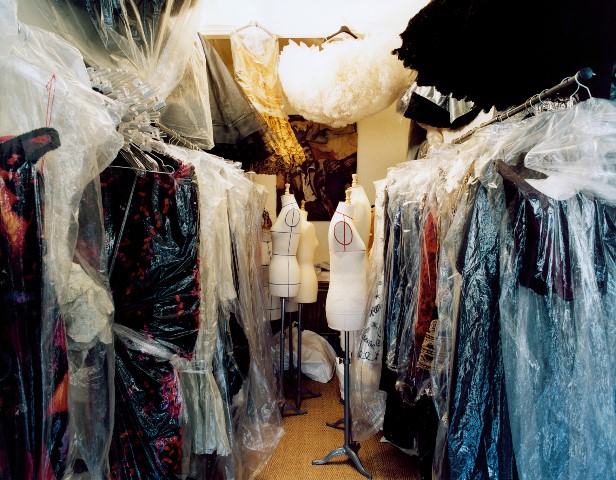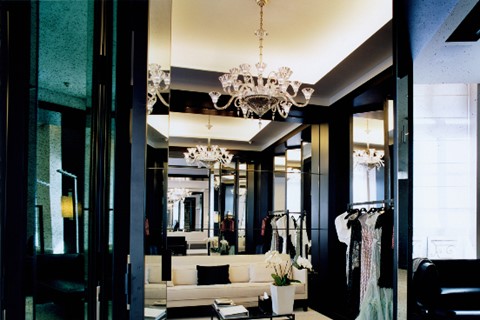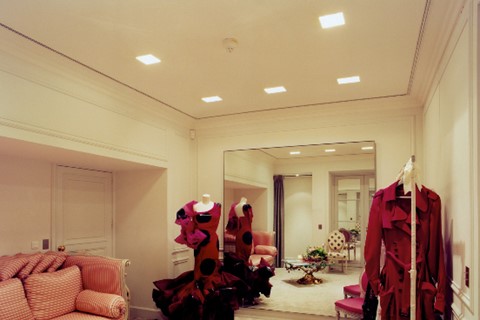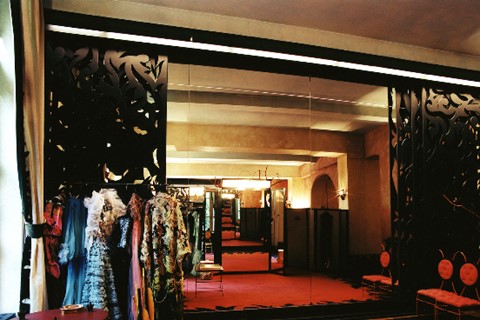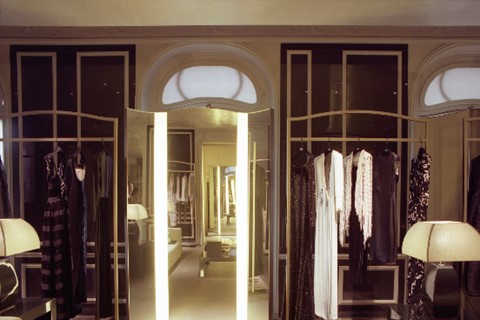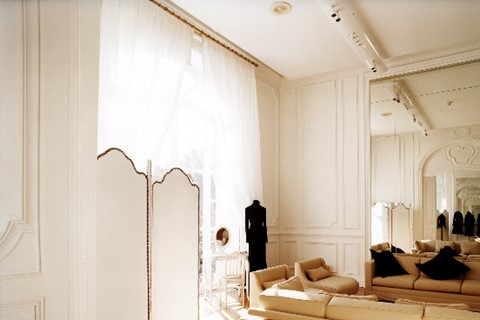Jacqueline Hassink is a New York-based Dutch conceptual artist. Originally trained as a sculptor, in 1993 she began taking photographs, investigating the identity of economic power through objects and spaces. In 2000, Hassink came up with the idea
Jacqueline Hassink is a New York-based Dutch conceptual artist. Originally trained as a sculptor, in 1993 she began taking photographs, investigating the identity of economic power through objects and spaces. In 2000, Hassink came up with the idea of photographing fitting rooms of ready-to-wear fashion houses in Tokyo and New York. She was fascinated by these small spaces that transform from public into private spaces and then back again, and also interested in discovering how fashion houses deal with the design. “Fitting rooms are of great importance to brands,” says Hassink, “since they are usually the place where the client makes his or her final decision to buy the product.” After completing the series, VIP Fitting Rooms, USA & Japan (2000-2003), Hassink turned her gaze to the world of haute couture and has been shooting the private fitting rooms of the richest and most discretely famous couture costumers ever since. To coincide with couture week, which kicks off in Paris today, AnOther sat down with Hassink to talk about the project, which will be published as a book. An exhibition of the series will also open at NL –The Dutch Cultural Pop-Up Space on 22 February during London Fashion Week.
The mirror and its reflections are very prominent in the images. What do you think that means?
When I started photographing, I wasn't thinking about the mirrors but the more I shot the fitting rooms, the more I was fascinated by the complex compositions that were possible because of the mirrors. Haute couture fitting rooms are much larger than regular fitting rooms. After entering these spaces, I would spend some time walking around looking at different angles to shoot. As I walked through the spaces, the mirrors would show me reflections of different sections of the room. Only in certain areas of the room you will find these extraordinary complex compositions of space like the ones visible in the images taken at Jean-Louis Scherrer and Emanuel Ungaro. I have photographed fitting rooms that are hard for the viewer to grasp. Because of all the mirrors and their reflections it is very hard to understand what is real and what is a reflection. At that point our understanding of what a room is disappears even though we know that what I photographed is real and not a manipulation. Because of that the identity of a room or space disappears. Frits Gierstberg (Head of Exhibitions at the Nederlands Fotomuseum and Professor in Photography at the Erasmus University, Rotterdam) writes in my book The Power Book: "From a more thematic viewpoint, the fitting rooms represent the opposite of what Hassink normally photographs — spaces where the construction of identity takes place rather than one where a constructed identity is displayed. They’re places in which to choose clothing and thus offer the opportunity to look at yourself — to be reflected in the mirror as if being seen through the eyes of another."
As a former sculptor, what is your approach to photography in general and in particular to the haute couture fitting rooms project?
I see myself as an artist and I use photography to express my ideas. Because of my background as a sculptor I have an excellent feel for space and that is very helpful while photographing complex mirrored spaces like these fitting rooms.
Are these images about femininity?
In a sense they are but that is the not the most important part. They are more about private and public space and their transformation. They are also about the meaning and complexity of space as well as corporate identity
You have entered into and photographed the private quarters of some of the richest and most powerful men and women in the world.
In the beginning it was quite special photographing the state banquet of Queen Beatrix or entering the homes of top executives. What in the end really fascinated and intrigued me was how each of these individuals creates their own living and work space. What objects they collect around them and what colours they prefer. In a global perspective it is really interesting to see how powerful men and women in countries like Japan, Saudi Arabia, the USA or Switzerland deal with power and how they visualize their position of wealth through objects and spaces.
What is power?
It is far too general question to answer. There are so many definitions of power. If we are talking about individuals and economics I would answer that power is the ability to be financially and intellectually independent and at the same time have the position to rule and decide for many people. I think influential businessmen, and in particular CEOs of very large multinationals, have great power.
How was your experience entering these exclusive spaces?
One day I visited the salons of Franck Sorbier and Chanel; Chanel being the oldest couture house and Franck Sorbier the youngest. I had great respect for Franck Sorbier. His salon was more like an artist atelier, situated in a French apartment on the second floor. You could feel the labour and creative process that was going on there. While at Chanel it was very different. Beautiful elegant young women were welcoming me in black outfits. They were all picked for their beauty; they represented, to me, the 'Chanel Girl'. The space where the clients were welcomed was exquisite and you felt the long history of the house and its strong and powerful position within the haute couture world. Entering the 'client floor' one saw a vitrine behind glass with all the latest models. The design, craftsmanship and fabrics used were of the highest quality. It was a real feast to experience this.
Text by Ricky Lee
Jacqueline Hassink, Haute Couture Fitting Rooms runs from 22 February, during London Fashion Week, at NL – The Dutch Cultural Pop-Up Space in London, 40/42 Riding House Street, London, W1W 7ET
